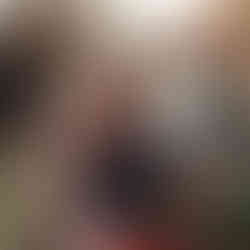Evanescent Keepsake
- Maria Fagan
- Jul 19, 2017
- 3 min read

When we learn to let go of the things we cannot control, we learn that knowledge is power and imagination is invaluable. With the impressionable minds of children we are able to shed some light on how to problem solve as a team which entangles the minds and hearts of those working together as one.
My daughter had a rough go with nightmares for a while. After many nights filled with fear and crying, I thought about dream catchers. I couldn't remember the background of them, all I could recall is that they "caught the bad dreams" . Instead of learning about it by myself first and then teaching Cecilia, I decided to expose her to the fact that I don't know everything and when I am not sure, researching is a powerful tool. I first asked Cecilia what she thought a dream catcher looked like, she said it looked like a spider web. Sure enough when I found information on it, that is exactly what it was described as; spiders are considered protectors in ancient Native American tribes.
Ancient legends about the history and origin of the dreamcatcher exist among several Native American tribes, but chiefly through the Ojibwe and Lakota nations. While many cultures find spiders to be creepy crawlers, the Ojibwe people found them to be a symbol of protection and comfort. According to the Ojibwa story, a mystical and maternal "Spider Woman" served as the spiritual protector for the tribe, especially for young children, kids and babies. As the Ojibwe people continued to grow and spread out across the land, The Spider Woman found it difficult to continue to protect and watch over all the members of the tribe as they migrated farther and farther away. This is why she created the first dreamcatcher. Following her example, mothers and grandmothers would recreate the maternal keepsake as a means of mystically protecting their children and families from afar.
Sometimes referred to as "Sacred Hoops," Ojibwe dreamcatchers were traditionally used as talismans to protect sleeping people, usually children, from bad dreams and nightmares. Native Americans believe that the night air is filled with dreams, both good and bad. When hung above the bed in a place where the morning sunlight can hit it, the dream catcher attracts and catches all sorts of dreams and thoughts into its webs. Good dreams pass through and gently slide down the feathers to comfort the sleeper below. Bad dreams, however, are caught up in its protective net and destroyed, burned up in the light of day.
All parts of the authentic Native American dreamcatcher have meaning tied to the natural world. The shape of the dreamcatcher is a circle because it represents the circle of life and how forces like the sun and moon travel each day and night across the sky. The dream catcher web catches the bad dreams during the night and dispose of them when the day comes. As for the good dreams, the feathers act as a fluffy, pillow-like ladder that allows them to gently descend upon the sleeping person undisturbed. There is some contention when it comes to the meaning of the beads that often decorate the dreamcatcher. According to some American Indians, the beads symbolize the spider—the web weaver itself. Others believe the beads symbolize the good dreams that could not pass through the web, immortalized in the form of sacred charms.

Right before my sister and brother in law went on vacation, I shared the dream catcher story with her. Sure enough they came home with an 8 foot dream catcher made from shells which hangs directly above her bed. It was so awesome to receive a gift with such a strong purpose.
Cecilia and I had a conversation following what I read to her about how dream catchers actually worked and to my surprise she not only got it, she is able to explain it to people a year later. These little minds are sponges... it is so fun to grow and learn with them.
Cecilia and I decided, we ought to just make our own dream catcher. This was a very special project we did together.













Comments